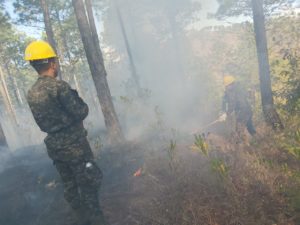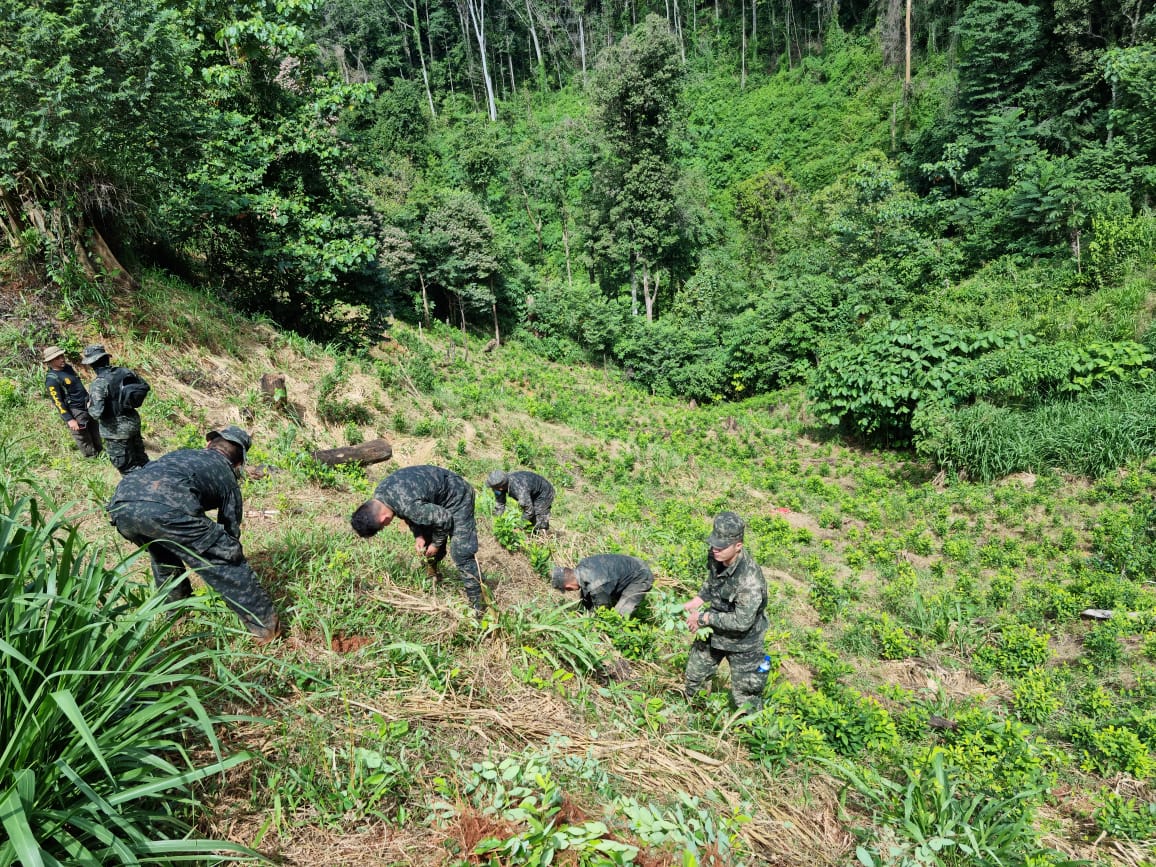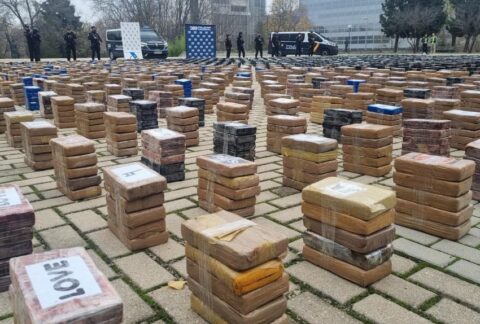Deforestation in Honduras has many causes. Organized crime, narcotrafficking, illegal logging, and forest fires all greatly harm the environment.
According to a February 1, 2022 report from the Honduran Forest Conservation Institute (ICF, in Spanish) 37 fires affected 490 hectares of forest in Francisco Morazán, Valle, Gracias a Dios, and Santa Barbara departments, in January. In 2021, more than 90,000 hectares of forest were destroyed as a result of 816 intentional fires to grow illegal crops and carry out other activities, such as cattle farming, the ICF says.
“Part of the destruction is also caused by narcotraffickers who clear the forest to build their clandestine airstrips, farms, and drug laboratories,” an indigenous leader from the Río Plátano Biosphere of the La Mosquitia region told the environmental news site Mongabay.
According to Osvaldo Munguía, executive director of the Honduran nongovernmental organization Agency for the Development of the Mosquitia, the areas most affected by illegal fires and logging are the Tawahka Biosphere and the Río Plátano Biosphere, which cover nearly 8,000 square kilometers of protected forest, and are home to tens of thousands of indigenous people, as well as hundreds of endangered plant and animal species.

Criminal action
The destruction in January 2022 of two coca plantations by Honduran Armed Forces can be seen as evidence that narcotrafficking activities in the north of Honduras are increasing, causing enormous damage to the environment. Between 2020 to 2021, coca plantations alone affected 140 hectares of forests, Mongabay reported. Authorities destroyed more than 525,000 coca plants and eight narco-labs in 2021, the Spanish news agency EFE said.
Honduran Army Colonel Carlos Ivanovich Rodríguez Maldonado, commander of the Paz García Joint Task Force, told Diálogo that these crimes “are mainly committed by narcotraffickers whose tentacles reach throughout the north of the country. They basically enter through this department [Gracias a Dios] and continue to Colón department, carrying out illicit activities such as coca and marijuana plantations, and destroying a large part of the ecosystem.”
Col. Rodríguez said that in order to plant marijuana o coca, criminals do not cut the vegetation but rather start fires, destroying the flora and fauna in the area. He added that criminals destroy nearly 2 hectares of forest for every 20,000 coca or marijuana plants.
Forest plan
To reverse the damage organized crime causes, the Honduran Armed Forces carry out ongoing reforestation operations, in coordination with the Ecosystem and Environmental Management Support Command (C-9), the ICF, and the Office of the Attorney General’s Special Prosecutor for the Environment.
“We have made a significant contribution to our forests by planting 2.5 million seedlings […], which contributed to recovering 4,167 hectares in 2021,” Honduran Army Colonel Juan Ramón Hernández, C-9 commander, told Diálogo.
Each unit that makes up the Army has an established annual reforestation plan, and there are at least 20,000 seedlings to be planted in reforestation operations for each unit as well, Col. Rodríguez said.
“We not only have under our responsibility the operations or the fight against common crime, narcotrafficking, and international organized crime, but also the ongoing responsibility to the ecosystem,” he concluded.









